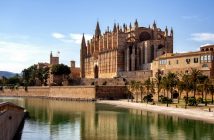Moscow still remains the city that the world associates with iron-clad socialism, dodgy airline companies and the imposing Kremlin. Despite being only a short hop from London (four hours airtime), it invokes a far-off, almost feral image.
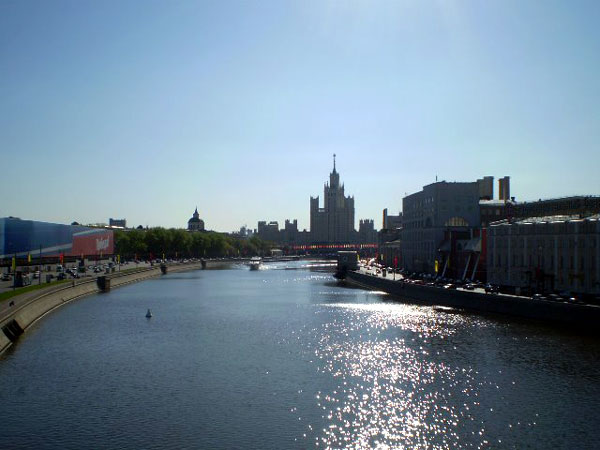
But Moscow is the gateway of Europe and Asia, a bejeweled treasure trove of history, style and inconceivable wealth. It’s a booming economy and a super rich city. Bid left-wing politics farewell, my friends, and escape into Europe’s premiere luxury destination.
By population size, the city is the sixth largest on earth, and the northernmost ‘megacity’ in the world. It’s a city of statistics: according to Forbes in 2011, Moscow had the largest number of billionaires in the world. Like its architecture and spirit, Moscow is big by numbers.
Radisson Royal Hotel, on the banks of the Moscow River, is the destination hotel of the year. With a tall spire not dissimilar to something out of Gotham City, the Radisson was originally built as Hotel Ukraina, and is still known anecdotally as this today. At its inception in 1953, it was the tallest hotel in the world. Inside is no less spectacular: 505 rooms, 38 apartments and five restaurants stack on top of each other. A relaxed lounge bar sits at the back of the Ukraina – clusters of smart round tables and laid-back sofas scatter the domed space. Waiters and waitresses are unfailing polite, even clipped; but will happily explain the cocktail of the day, or the fine selection of champagnes.
The Ukraina is proud owner of a fleet of large yachts, which trail up and down the Moscow River most days. Saturday nights are the most quixotic for a trip: beginning at the Ukraina port, opposite the headquarters of Russian oil giant Gazprom, you sail downstream towards the Kremlin, past the Olympic stadium, under bridges, past Gorky Park. Take your seat on the boat, order a bottle of wine and stare myopically out of the steamy windows at the sights outside.
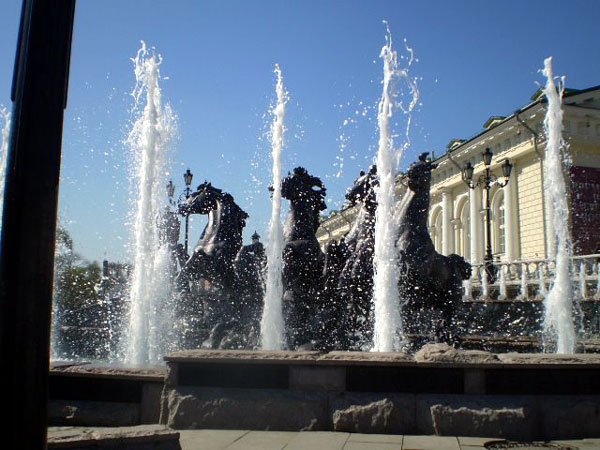
For night owls, Red Oktober, a former chocolate factory reincarnated as an art centre, is the most democratic, and newest, place in town to drink. Housed on a channel straddling the Moscow River, the red industrial building is a partygoer’s dream. Trendy Red Oktober cafes, such as Italian restaurant Produkty, house a group of Mac-toting, louche Russian individuals. It’s stylish, and it’s up-and-coming: in fact, its transformation is still ongoing, which ensures it throngs with a creative vibe.
Along the Moscow River in the industrial complex is Rolling Stone bar, which boasts quite possibly the best terrace in central Moscow. Grab a glass of Russian Standard vodka (what else?) and position yourself on a swing on the high-up terrace, overlooking the sprawl of bohemian Moscow district Zamoskvorechie in the distance.
To the east of Red Oktober, the Kremlin spreads like paint over the north side of the river. Bordering Red Square to the east, the Moscow River to the south and Alexander Gardens to the west, the Kremlin is the heart and soul of modern Russia – of both the good and the bad. Four palaces, four cathedrals and the official residence of the President of Russia – currently the incumbent Vladimir Putin – make up the commanding compound. Before Putin, Lenin and Stalin both had their personal rooms in the Kremlin.
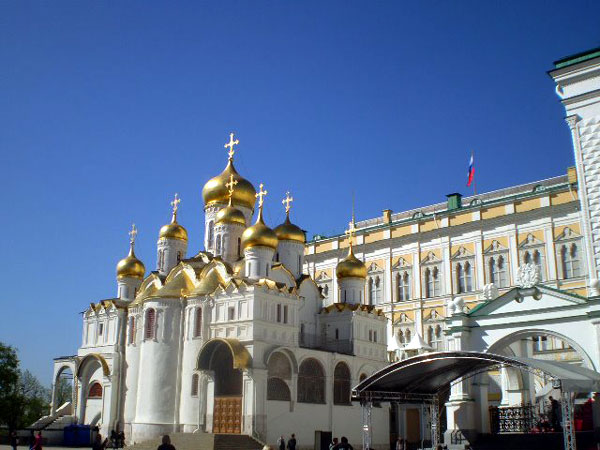
Cathedral Square is the beating pulse of the Kremlin. When not surrounded by a swarm of European tourists, it is boxed in by three cathedrals, decked out in ornate limestone. The Ivan the Great Bell Tower imposes down on the Kremlin, with a 30-tonne bell inside. On a sunny day, by standing in the middle of the square in tranquil silence you start to get a feeling of how much this giant country has been through. Or, rather than staying on terra firma, ascend the stairs of the tower. The effort of walking up is vindicated by the spectacular view afforded over the city.
Lest one forget the Moscow metro. Gone are the sweaty armpits of London’s Tube or the grimy windows of the New York subway: the Moscow metro (frustratingly, all in undecipherable Cyrillic) is famous for its art, murals, mosaics and intricate chandeliers. While it’s nigh-on impossible to navigate, walk slowly down the long corridors and look up, look to the side, or gather at the end – chances are there’s an artwork waiting to be discovered. Visit metro Kievskaya, with its elegant marble hall and Ukrainian frescoes, or metro Mayokovskaya – a domed art deco central hall, slim steel columns and mosaics on the ceiling, depicting 24 Hours in the Land of the Soviets. It’s beautiful, yet twinges of something more morbid: thanks to its depth of 33m, it served as an air raid shelter during world war two. The metro system is often uncomfortably crowded and somewhat moribund, so choose your moment to take a tour: Saturday or Sunday morning, or in the evenings after 8pm, are usually the best times. It’s not uncommon for a Russian musician to be found down some of the tallest elevators in the world, strumming his violin to a Mozart piece.
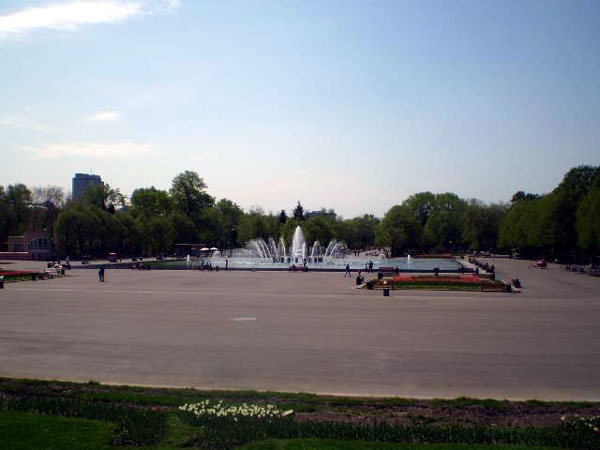
To the west of the city lies Gorky Park, an oasis of calm away from the hubbub of the metropolis. Formerly an amusement park, Gorky is now an odd halfway house between communist edge and modern Russian fun. During the weekend, keep your eyes open for brides – they litter the park’s grounds over the summer months. It’s officially Moscow’s park kultury – park of culture – and stretches 3km alongside the Moscow River. It’s edgy rather than picturesque, but with the help of Moscovians cycling elegantly through the park’s arteries, and some scattered ice cream vans, it’s a decent place to while away a lazy Saturday, when the city has zapped all energy. Oligarch Roman Abramovich has charged himself with revamping Gorky – so expect it to look a lot more bling in years to come.
Sadly – and it pains me to say this – Russian food is not even worthy of a mention. As an increasingly metropolitan city, there are plenty of other choices – Italian, sushi after sushi bar and even Ukrainian – but Russian food still commands a reputation of cold beetroot soup, heavy slabs of bread and cold flats of meat, and unlike its iron curtain days, this hasn’t evolved. Choose Georgian – and there’s a lovely, relaxed little chain called Khachapuri serving up Middle Eastern-cum-Mediterranean-food that is recommended – over any restaurant boasting ‘Russian flavours’. Chances are it’ll be a pickled egg and a slither of salted salmon.
Moscow may not be known for its food, but it is known for its classical arts: ballet and opera. This is a city where the classics never go out of fashion. Tchaikovsky, the best-known Russian composer, is on almost every playbill in town: classical opera is still much de jour, although the top theatres now are attempting to show some more modern works.
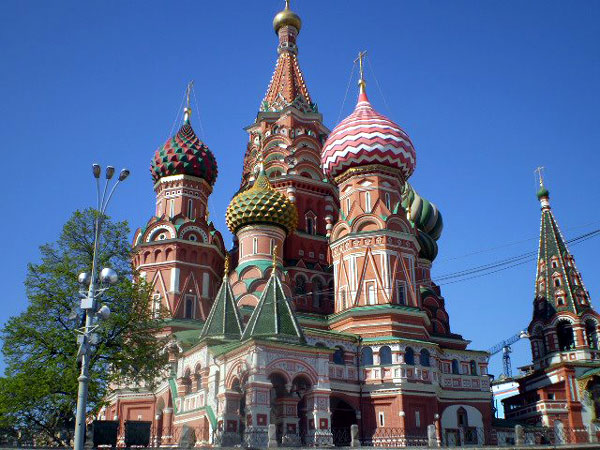
The Bolshoi Ballet and Opera Company, currently run by soloist Yan Godovsky, was founded in 1776, and has charged itself with producing world-class classics including Swan Lake and the Nutcracker. Meanwhile, the Pushkin Fine Arts Museum, designed by architect Roman Klein, has been la pièce de la résistance of Moscow’s art scene for more than 100 years. Celebrated for its impressionist paintings, it also boasts the most representative sample of Russian paintings from ancient times.
A small caveat on the spirit of Moscovians. Be prepared for Russians to either be incredibly friendly, or incredibly rude. They’ll either go to the ends of the earth (by showing you personally around the metro), or consider you just another pesky unwelcome tourist.
Yet for four girls in search of an epicurean adventure, Moscow offered up a heady combination of politics, history and style. Forget clichéd but undeniably beautiful Marrakech, eschew overpriced and B list celeb haunt St Tropez and make for Europe’s most remarkable and esoteric new city destination.


